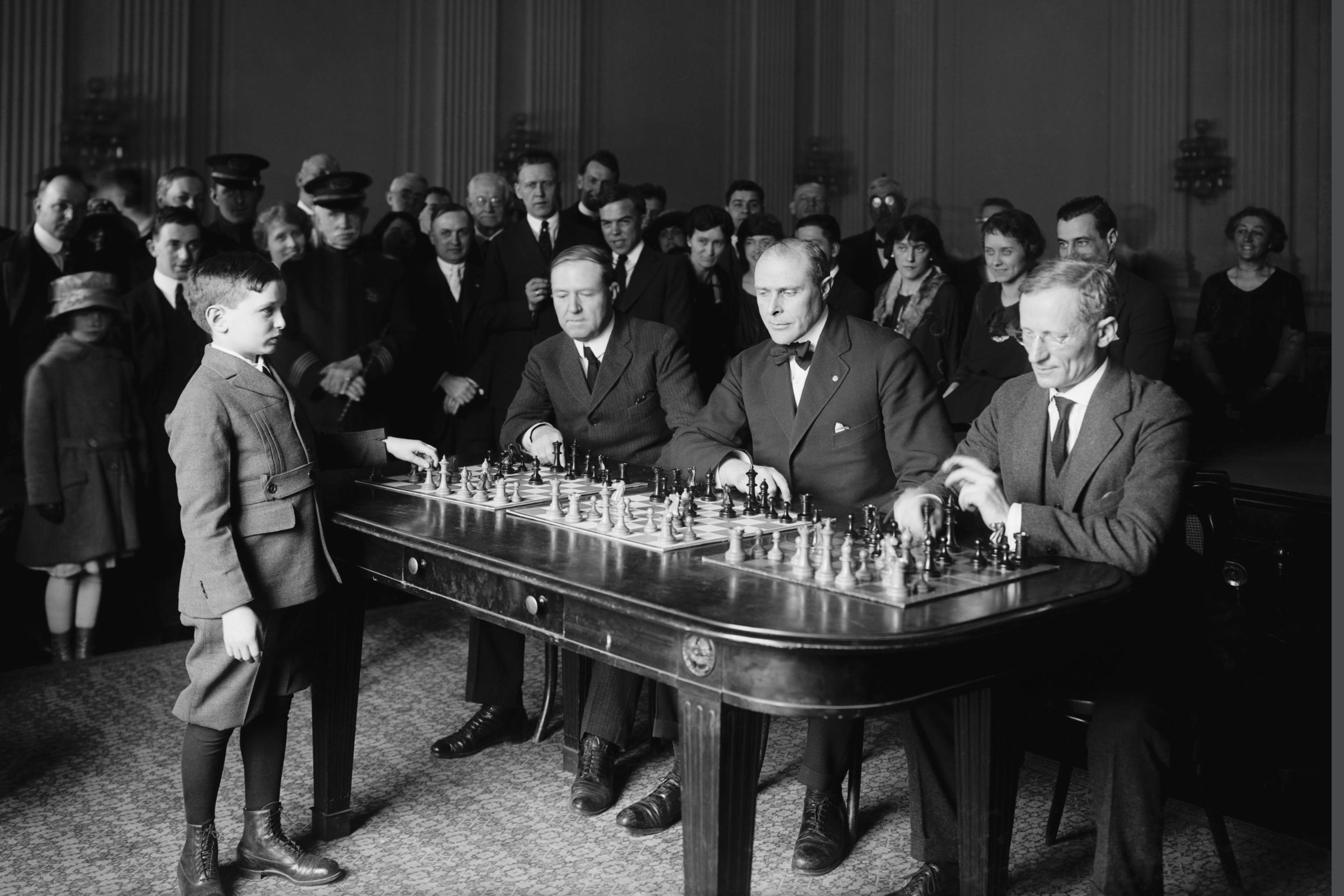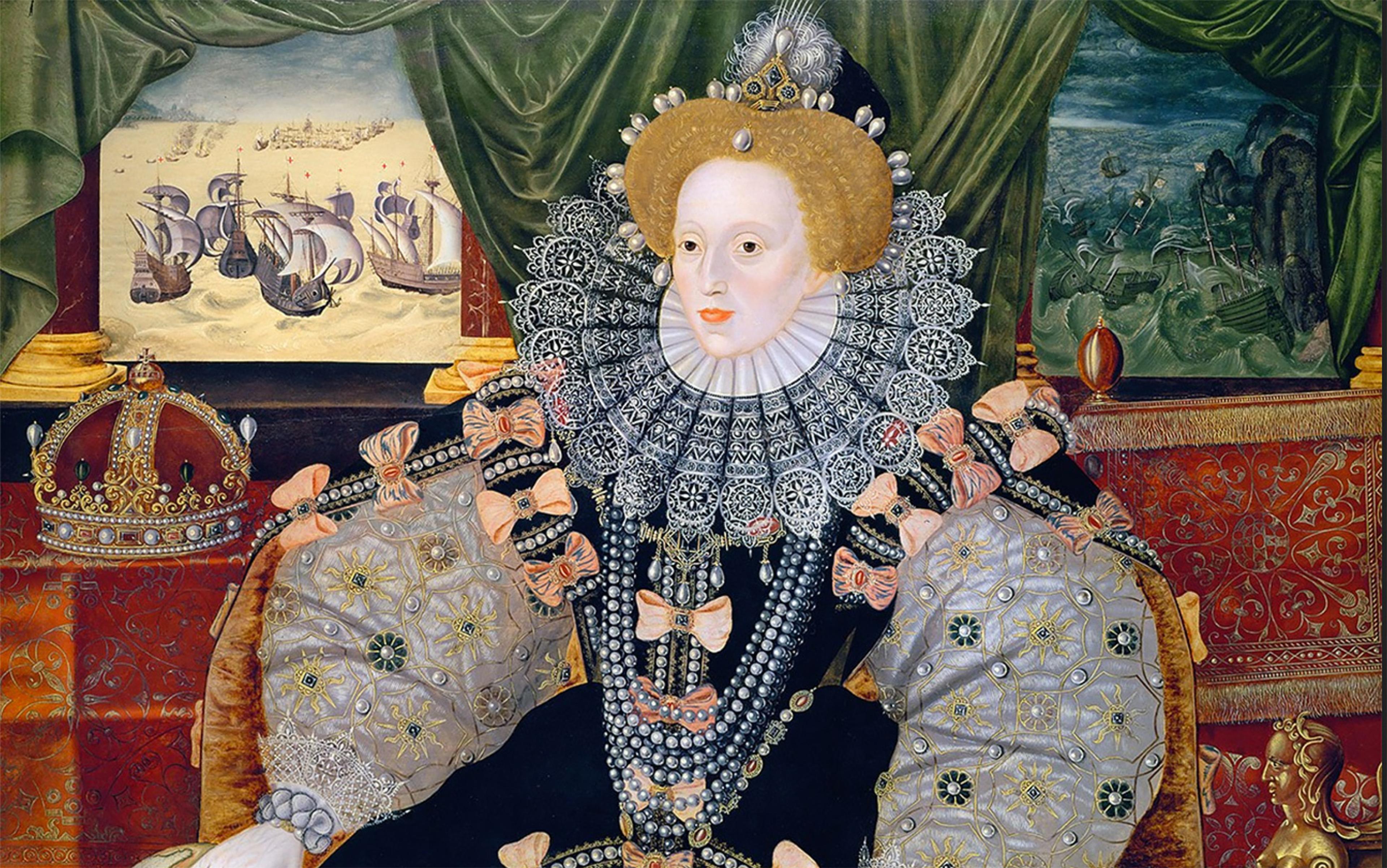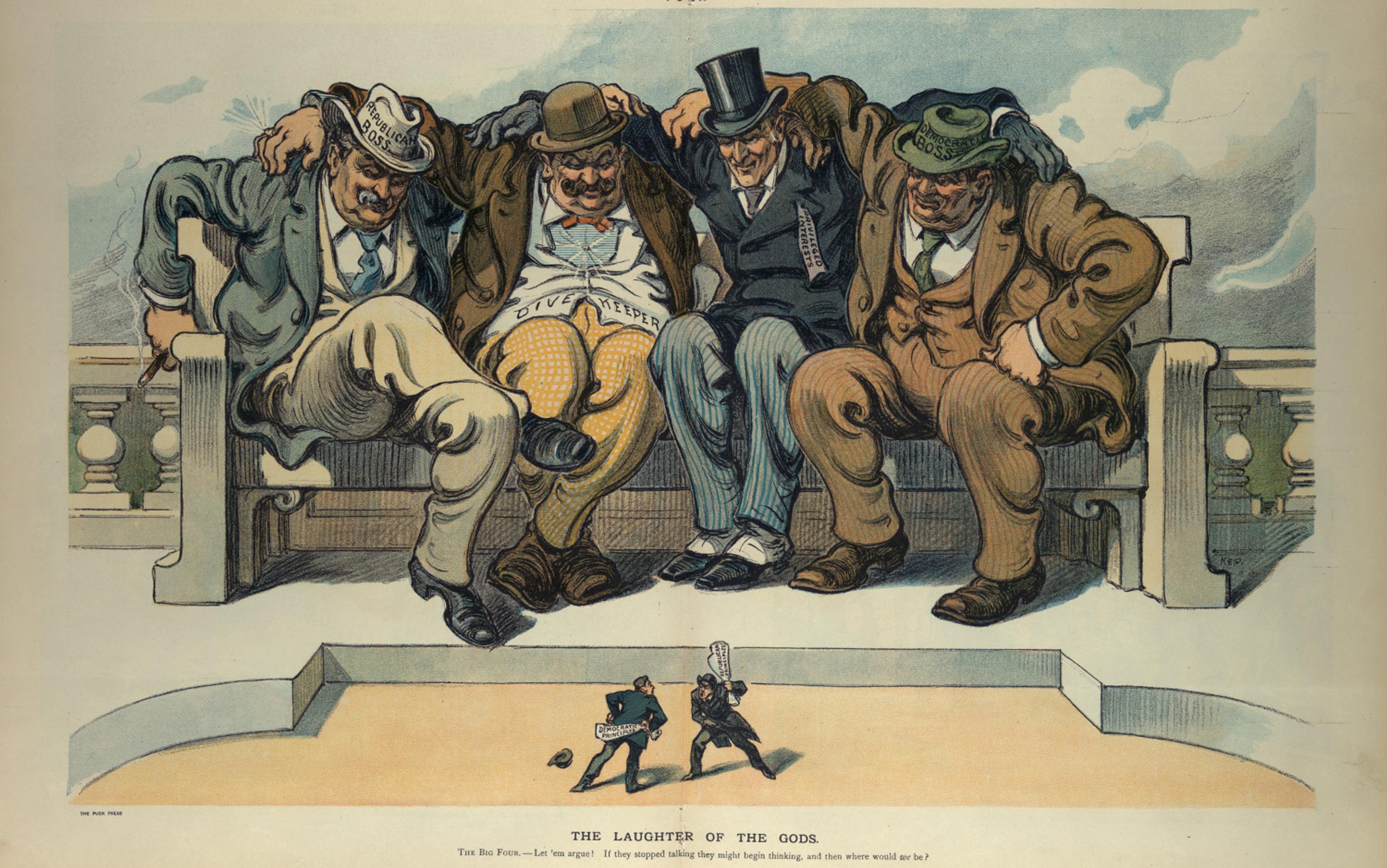On 25 November 1915, the American newspaper The Review published the extraordinary case of an 11-year-old boy with prodigious mathematical abilities. Perched on a hill close to a set of railroad tracks, he could memorise all the numbers of the train carriages that sped by at 30 mph, add them up, and provide the correct total sum. What was remarkable about the case was not just his ability to calculate large numbers (and read them on a moving vehicle), but the fact that he could barely eat unassisted or recognise the faces of people he met. The juxtaposition between his supposed arrested development and his numerical facility made his mathematical feats even more impressive. ‘How can you account for it?’ asked the article’s author. The answer took the form of a medical label: the boy was what 19th-century medicine termed an ‘idiot savant’. He possessed an exceptional talent, despite a profound impairment of the mental faculties that affected both his motor and social skills.
A century after The Review relayed the prodigious child’s mathematical abilities, trying to understand ‘how they do it’ still drives psychological research into savantism or ‘savant syndrome’ to this day. The SSM Health Treffert Centre in Wisconsin – named after Darold Treffert (1933-2020), one of the leading experts in the field – defines the savant phenomenon as ‘a rare condition in which persons with various developmental disorders, including autistic disorder, have an amazing ability and talent’. Today, savantism is largely comprehended through the lens of neurodivergence, since the association between savantism and autism is strong: roughly one in 10 people with autism exhibit some savant skills, while savantism in the absence of autism is much rarer.
Psychological studies by Simon Baron-Cohen and Michael Lombardo, for example, have focused on the neurological basis of ‘systemising’, where exceptional mathematical or musical skills exist among people diagnosed with autism: such people are ‘hypersystemisers’, that is, they are especially good at identifying ‘laws, rules, and/or regularities’. It is believed that their brain’s systemising mechanisms are ‘tuned to very high levels’, making them acutely sensitive to sensory input and also capable of intense attentional focus and rule-learning.
But in the past (autism became a diagnostic category only in 1943), the ‘idiot savant’ was a paradox, who confounded categorisation because there was no unified way of comprehending how such exceptional musical and numerical skills might co-exist alongside their polar opposite: profound disability. To use the language of the 19th century, how could a person be at once both a ‘genius’ and an ‘idiot’? The savant challenged conventional understandings of how talent was manifested, and who could manifest it, and at the same time upset notions of who might be classed as an ‘idiot’. In the scheme of how intelligence was understood then, the savant was at best otherworldly and at worst a monstrosity.
The historian Patrick McDonagh points out that ‘idiocy’ was a highly ambiguous medical term that was nonetheless widely accepted. Perhaps, in part, because it was a boundaried category that fulfilled an important social-symbolic function: namely, it offered a contrast against which modern individuals could define themselves as rational and intelligent, reinforcing their claims to respect and social authority. It also meant that people like that 11-year-old boy who was fascinated with numbers but was nonetheless considered an ‘idiot’ – in the medical parlance of the day – created a contradiction that continues to have implications today.
The term ‘idiot savant’ was coined in the 1860s by the French physician and educational reformer Edouard Séguin (1812-80). While researching the state of education for so-called ‘feeble-minded children’ in the United States (where he became naturalised), Séguin identified a particular type of child who seemed to excel in one skill despite demonstrating significant mental impairment. According to Séguin, these ‘idiot savants’ were specific to the elite classes, which were already characterised by their excessive desire for luxury and lack of useful contribution to society. For Séguin, the idiot savant – ‘Men abnormally developed in one direction … but idiotic in every other respect’ – was the physical embodiment of this uselessness. He wrote:
It is from this [wealthier] class almost exclusively that we have musical, mathematical, architectural, and other varieties of the idiot savant; useless protrusion of a single faculty, accompanied by a wo[e]ful general impotence.
At a time when the middle classes were grappling with the fear of social degeneration, Séguin’s pejorative comments went beyond medical observation to reflect a broader critical attitude towards the aristocracy, who were viewed as effete, weakened and hypochondriacal. The idiot savant reinforced these class stereotypes: even their talents, no matter how precocious, were useless.
But Séguin’s position was by no means universal. Physicians like John Langdon Down in England argued that cases of ‘idiots savants’ could be found among all classes of society, and that their exceptional talent could (and should) be trained as a way to contribute to society through their art and skills. One of the savants under Langdon Down’s care was James Henry Pullen, who arrived at the Earlswood Asylum in Surrey in 1850 at the age of 15. Unschooled and largely deaf, he had a very restricted vocabulary: what little Pullen could write or say had been taught to him by his family. However, he showed an enthusiasm for drawing and carving; he had been whittling ships from small pieces of firewood from a young age and without any training in carpentry and, after arriving at Earlswood, he was put to work in the carpenter’s shop. Quickly, he became an expert carpenter. He built furniture for the asylum, though his true delight was in fashioning large-scale models of real and imagined ships. Pullen, his caretaker explained, ‘could build exquisite model ships from drawings, and carve with a great deal of skill, who yet could not understand a sentence – who had to have it dissected for him.’ Pullen’s career spanned his 66 years at Earlswood, during which time his ships won numerous prizes and international recognition – including that of Edward, Prince of Wales, who sent him ivory tusks as encouragement to continue producing his art.
Her caretakers praised her sweet mannerisms and happy demeanour, which fit with the humble values of the time
Langdon Down believed that, by developing their skills, individuals such as Pullen could become both more self-supporting and useful to society. Indeed, such beliefs were the driving motivation behind the education of intellectually disabled individuals in the 19th century. Like many other labels used to pathologise behaviour, for example the ‘juvenile delinquent’ and the ‘homosexual’, the creation of the ‘idiot savant’ medical category became crucial in debates about rights and responsibilities in a period characterised by a strong belief in the meritocratic order of society, as a tool to legitimise social difference – and to moralise it too, by invoking the need to be charitable. Pullen’s case illustrates how individual talent, social recognition and institutional benefits could co-exist and shape the lived experience of an individual.

James Henry Pullen, c1880s. All photos courtesy Langdon Down Museum of Learning Disability

The Giant, outside and inside view, by James Henry Pullen (late 1860s-early 1870s)

Study after the State Barge (1867) by James Henry Pullen

Queen Victoria’s State Barge (1866-7) by James Henry Pullen
This dynamic is exemplified in the case of a young talented woman, whose name has been lost to history, permanently resident at the renowned psychiatric hospital La Salpêtrière in Paris. Born blind and both physically and intellectually disabled, her ‘musical memory and voice’ were a joy both to her and to those who shared their day-to-day lives with her. She was involved in the asylum choir and was responsible for correcting the other members’ voices. Her caretakers praised her sweet mannerisms and happy demeanour, which fit with the humble values of the time: one must not brag about what one is born with, but accept it with grace, and use it for the common good. Her skills were so well known that the contemporary composers Jean-Antoine-Just Géraldy, Franz Liszt and Giacomo Meyerbeer all visited her in person and praised her unique talent. As the asylum director explained, her talent would have warranted a high social status had it not been for the fact that she was highly dependent on others to look after herself.
During the second half of the 19th century, the nature of genius became one of the central debates within the human sciences. In the context of the theory of degeneration, which migrated from natural history to evolutionary theory, and which claimed that civilisation was in decline due to the inheritance of undesirable characteristics, genius became an ambiguous quality: it could either guarantee progress or further contribute to society’s decay. Understanding what genius was and how it emerged became a pressing issue with social consequences. Was genius something that appeared spontaneously, or the product of an individual’s hard efforts? Could it be harnessed and cultivated for the greater good? Less positively, genius had historically been associated with madness in some way, and this posed yet another issue: was genius a pathology? Were people with prodigious abilities actually mad? And what did that mean for those men responsible for the progress of society, who were often classed as geniuses?
Three singular authors came to represent each of these questions: the Italian criminologist Cesare Lombroso, the British eugenicist Francis Galton, and the British sexologist Havelock Ellis. Using statistical analysis, Galton claimed that genius was an inherited quality that emerged independently from education. It was for this reason that men of science begot other men of science: genius was handed down. His hereditarian understanding of genius had important implications for the theory of eugenics, which took hold in the early 20th century among thinkers convinced that a better society (or ‘race’) of people might be built by encouraging reproduction between individuals who had exceptional qualities useful to the rest of society.
That his father, grandfather and brother were all drummers was proof of the patient’s apparently innate talent
In contrast, Lombroso – notorious for his work on criminal anthropology and the creation of criminal ‘types’ based solely on physical features – argued that genius was a pathological condition similar to insanity. For Lombroso, genius was like a pearl: the result of a morbid alteration that produced something beautiful. But the fact that it could be found among criminals confirmed its ultimately sick nature. Finding a middle ground, Ellis proposed that genius was a hereditary trait associated with idiocy (as opposed to madness), whereby one faculty was overdeveloped at the expense of the rest of the proper functioning of the mind and body. By way of example, he cited the excessive clumsiness that geniuses often seemed to exhibit, but the key to understanding the real nature of talent rested, Ellis argued, in the figure of the ‘idiot savant’ rather than the lunatic, thereby placing genius on the same scale as idiocy.
In the meantime, physicians debated whether or not talent ran in the families of savants. Some cited examples of several family members demonstrating the same ability, among them the case of a man permanently resident at the Salpêtrière who, without ever having played an instrument, had the opportunity to pick up a drum and play with great talent. Upon further inspection, it turned out that the other men in his family were all skilled drum players: that his father, grandfather and brother had all been drummers was proof of the patient’s apparently innate talent. Other physicians countered that the appearance of this ability was random, even freakish; leaning into the paradox of the patient, they confirmed that his ability was pathological, while also highlighting its admirable exceptionalism.
The study of genius was linked to another issue: the problem of precocity. During the 19th and 20th centuries, as studies in the field of child development grew, and the IQ test, which defined intelligence in quantifiable terms, became an increasingly common tool to sort children into categories, two different ‘types’ of age became relevant: chronological and mental. The former referred to the natural passing of time of any individual, with its associated physical changes and growth. Meanwhile, mental age indicated the different skills and behaviours that most individuals reached at a similar point in time, reflecting different stages of mental development. Proper development required a correlation between the two, and any deviation from the norm was pathologised. Precocity and idiocy were two sides of the same coin: a lack of correspondence between the individual’s natural age and their mental age.
The paradigmatic example of precocity was the child prodigy. Records of precocious children date back to the 18th century, with examples including Mozart and Christian Heinrich Heineken, a prodigious child also known as ‘the infant scholar of Lübeck’, who, in his brief four years of life, could speak fluent German by the age of one, and read different biblical canons at the ages of two and three. However, as Andrea Graus has shown, it wasn’t until the mid-19th century that the figure of the child prodigy became a more widespread cultural phenomenon. Linked to the emergence of the entertainment industry and also the growth of developmental psychology, these children became subjects of scientific and popular fascination. Parents and managers alike quickly saw the economic benefit they could obtain from such children, and toured them nationally and internationally, in line with a culture of spectacle that drew masses of people to witness ‘freaks’ of nature. The performances of children like the Italian ‘mental calculator’ Vito Mangiamele (1827-97), the Spanish pianist Pepito Arriola (1895-1954) or the Polish-born chess player Samuel Reshevsky (1911-92) attracted large crowds, while they also became subjects of scientific scrutiny as psychologists tried to understand how it was possible for such talent to appear at such a young age. (Their answer? They had a prodigious memory, rather than any kind of creative ability.) The child prodigy embodied contradictory images of genius on the one hand, and mechanistic underdevelopment on the other: the same contrast that appeared in the idiot savant, whose representatives were often infantilised on account of their idiocy.
These conflicting understandings came together in one of the most famous examples of savantism in the 19th century: the pianist and composer Thomas ‘Blind Tom’ Wiggins. His case stands out for its singularity: Wiggins was Black, born into enslavement, and had both a physical and a mental disability. By the age of five, he demonstrated an exceptional talent for playing the piano and composing his own music, and at eight he began a career playing solo shows. Wiggins was exhibited across the country by his slaveholder (and, later, his manager), and the pamphlets advertising his talent claimed that it was purely natural, a raw material that could be ‘extracted’ for entertainment purposes, and was both fascinating and grotesque in its genius. (The analogy of extraction is not a coincidence: the historian Lindsay J Wright points out that Wiggins’s career took place against the backdrop of the Californian Gold Rush.)
One of the explanations put forward to explain Wiggins’s skill directly invoked his Blackness
However, historians of Wiggins’s case have cast doubt on the sui generis nature of his genius. While the shows emphasised his improvisational skills and ability to copy tunes from a young age as illustrations of his innate talent, historians note that Wiggins received piano lessons and was accompanied by an instructor with whom he practised his own compositions and those of others. Those close to Wiggins also pointed out that he was not an idiot, but rather ‘frantically delighted or bewitched, if you please, over the music he is making or hearing’.
Wiggins attained a celebrity status accessible to only a few during his period. People were mesmerised by his skill. In 1912, a chronicler for The Seattle Star described it as Wiggins ‘fe[eling] his way through the mazes of the most complex music’ in a way that was superhuman, as though he was touched by God. But others branded it monstrous. The American writer Mark Twain thought him almost demonically possessed; in a letter to The Daily Alta California in 1869, he wrote:
All the schooling of a life-time could not teach a man to do this wonderful thing, I suppose – but this, blind, uninstructed idiot of nineteen does it without any trouble. Some archangel, cast out of upper Heaven like another Satan, inhabits this coarse casket … It is not Blind Tom that does these wonderful things and plays this wonderful music – it is the other party.
Either way, a tension existed around the (impossible) figure of this incredibly talented blind Black man who referred to himself in the third person and clapped eccentrically during his performances. In a society that placed social status on an individual’s innate gift, attempts such as Twain’s to ascribe Wiggins’s talent to something else were strategies to explain away phenomena that did not fit the status quo.
Interestingly, one of the explanations put forward to explain Wiggins’s skill directly invoked his Blackness. In the mid-19th century, rhythm was understood to be corporeal, not intellectual, linked more to impulse and sensuality than to reason, largely on the grounds of believing that children, idiots and Black people all exhibited an easy appreciation of music, despite their savage, uncivilised natures. In pointedly racial tones, white Americans argued that Black people possessed an ‘innate musicality’, invoking musical ability as a way to perpetuate notions of essential difference. Similarly, Séguin promoted the use of music as a pedagogical tool that might stimulate the senses and develop the attentional focus of idiots, while noting that ‘their taste is of the popular or coloured kind’. Wiggins, a Black disabled man, confirmed these racially skewed ideas on two counts.
Since the Enlightenment, when the intellectual order was understood to mirror the social order, talented intellectually disabled individuals posed a problem for understanding the human mind and for naturalising social difference. This is particularly evident in the case of arithmetical ability. Outside of the universitites, it was considered a niche acquisition with little intellectual prestige, restricted mainly to the mercantile sector; but, with the spread of commercialisation, arithmetic became more important and was commonly seen as a marker of the power of reason. Prestigious mathematicians like Carl Friedrich Gauss in Europe and Nathaniel Bowditch in the US, renowned for their prodigious abilities, became symbols of Enlightenment genius.
But there were other 18th-century figures, like Jedediah Buxton in England and Thomas Fuller, an enslaved African in Virginia, who could neither read nor write but who demonstrated exceptional calculating skills. For Enlightenment men of science, such individuals offered an insight into the workings of the mind while at the same time posing a threat to the order of society. How could men like Buxton and Fuller be paragons of reason if they couldn’t hold a conversation? Their answer leant on the science of mind to explain that savant-like skill signified an exceptionally developed faculty of memory, and was not a real marker of reason. In the developmental theory of the time, memory was one of the first (and therefore less sophisticated) faculties to develop. As a result, these men of science used cognitive difference as a way to legitimise social hierarchy.
These practices once again denied intellectually disabled people the possibility of creativity
As medical science shifted in the 19th century towards an anatomo-clinical model, explanations for phenomena of the mind became increasingly rooted in the body – specifically, the brain and the nervous system. Idiocy shifted towards being understood as the product of brain lesions or deformities. When it came to the idiot savant, physicians theorised that their talent was due to brain protrusions and an uneven growth of the organ of the mind, in line with phrenological theories that claimed that the brain was divided into separate sections, each representing a distinct quality or ability that could be measured by studying the skull. Wherever possible, autopsies were carried out on the brains of idiot savants to find out if the cerebral tissue could shed more light on their unexpected talent. Some doctors theorised that the idiot savant would lose their special skill if they developed the rest of their brain functions to restore a more balanced state of mind, since their talent was caused by unequal development.
These practices once again denied intellectually disabled people the possibility of creativity: their abilities were ascribed instead to a pathology of brain or mind, or else explained away as nothing more than excellent imitation skills. ‘There is no spontaneous invention,’ affirmed the US neurologist Frederick Peterson in 1896: ‘The idiot savants are mere copyists in music, modelling, designing, or painting.’ Of course, imitation and repetition are central to the development of any skill, but men such as Peterson invoked these behaviours as a way of denying creativity to savants. Since creativity was so tightly linked to the soul, Peterson and his kind reinforced the idea that idiot savants were not fully human.
In a groundbreaking paper in 1943, the Austrian-American psychologist Leo Kanner described autism as being characterised by aloneness, a fixation with objects and the repetition of actions (like writing the same word over and over or shaking their head from side to side), as well as a preference for routines and for their surroundings to stay the same. Atypical cases Kanner discussed in his paper included children who could recognise composers and squirm in pleasure at their music by the age of one and a half, count to 100 by the age of two, sing a substantial repertoire before the age of three, and who had a remarkable ability to spell and complete arithmetic as a memory feat by the age of eight. Kanner argued that these children were born with an innate talent and a unique way of looking at the world. At a time when ideas about intellectual disability were opening up to psychoanalytical and social interpretations, Kanner’s description of children with autism gave room for imagination and uniqueness, while still defending the idea that their brains were wired differently, genetically and neurologically.
Savantism continues to fascinate us to this day. Even now, when we operate with the more inclusive category of neurodivergence as opposed to pathology, savantism’s rarity and precocity invite interest. We marvel at Stephen Wiltshire’s ability to draw large cityscapes from memory, or at Leslie Lemke’s ability to play a complex piece of music after listening to it just once. But marvelling has itself been problematised as a form of othering. Kim Peek’s exceptional memory skills might have made him the inspiration for Rain Man (1988), but the film’s portrayal of Raymond Babbitt (Peek’s avatar) as an infantilised incompetent has drawn pointed criticism from the neurodivergent community.
The savant is still a rare curio, even if the neurological context in which we comprehend them has changed
For its part, the disability community has expressed frustration over the cultural over-representation of exceptionally talented autistic figures for creating harmful stereotypes that render invisible those people with disabilities who are not exceptionally talented. Turning a historical lens on savantism is telling in revealing precisely how at different times we conceive and police ideas about who can be creative in different ways. What becomes evident in the rear-view mirror is that the medical discourse around savantism was not primarily about health, or even the sciences of the mind, but rather about politics and power(lessness).
Although we no longer brand idiot savants as monstrous, it remains a moot question how far we’ve really come. We still trip over this almost voyeuristic idea of exceptional, unexpected talent that make such figures inexplicable and intriguing. The savant is still a rare curio, even if the neurological context in which we comprehend them has changed. Disability scholars such as Joseph N Straus and Marion Quirici point out that merely by asking how exceptional talent can appear alongside disability, we reproduce social views that present disabled individuals as ‘Others’.
Yet the argument cuts two ways. Studies in psychology that comprehend talent as intrinsic to neurodivergent conditions such as autism spectrum disorder have given rise to a popular narrative that sees genius as innate, leading people to speak of disabled savants with so much awe and admiration that they become ‘supercrips’ – people who overcome their disability through their mysterious inborn talent. But this supposedly positive take still styles disabled people as being ‘not like us’. Otherworldly is still Other, and it imposes the need to be ‘more than’ in order to be accepted. As many disability advocates argue, these narratives of overcoming compound the idea that a disability is something negative, while obstructing the discomfiting subversive agency that disabled individuals can tap into through their very existence. To the extent that we still struggle to comprehend neurological complexity, the figure of the ‘idiot savant’ is a reminder that we need to do better at unpicking, processing and accepting difference.






